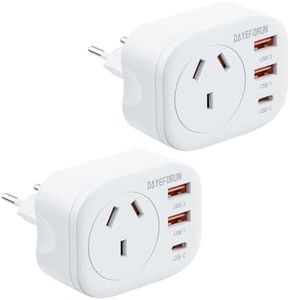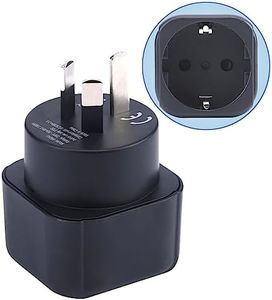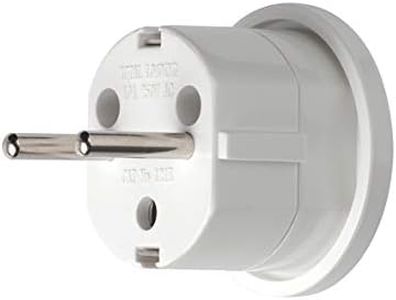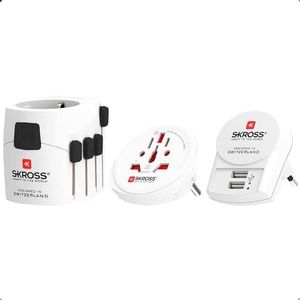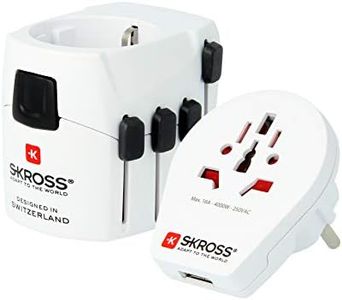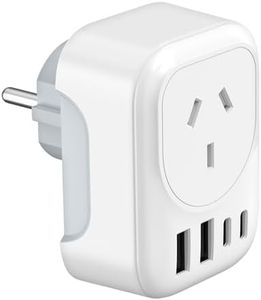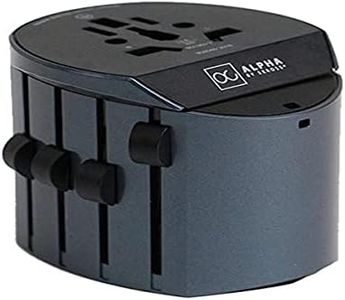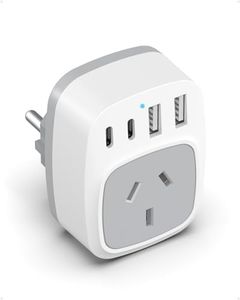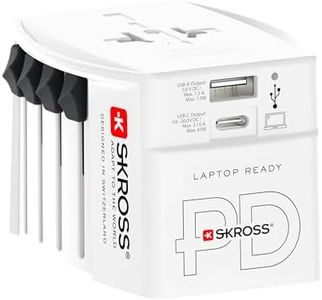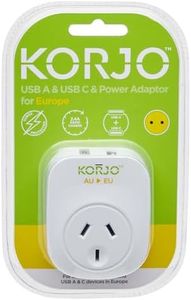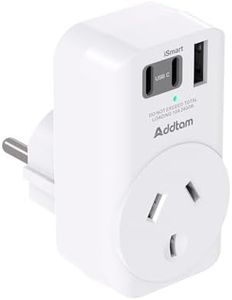We Use CookiesWe use cookies to enhance the security, performance,
functionality and for analytical and promotional activities. By continuing to browse this site you
are agreeing to our privacy policy
10 Best European Electrical Adapters
From leading brands and best sellers available on the web.Buying Guide for the Best European Electrical Adapters
When you're traveling to or within Europe, it's important to know that electrical outlets and plugs can vary from country to country. An electrical adapter allows you to connect your device’s plug to the wall outlet of a different shape or size. However, adapters do not convert voltage, so it's also important to ensure your device is compatible with the voltage and frequency of the local electricity supply. Picking the right adapter ensures your devices are usable, safe, and that you avoid any inconveniences during your trip.Plug Type CompatibilityPlug type refers to the shape and configuration of the prongs on the adapter. Europe has several different plug types (most commonly Type C, E, and F), and different countries may use different types. When choosing an adapter, check which plug types are used in your destination country. Some adapters are universal, covering many types, while others are specific to one or two types. If you visit multiple countries on one trip, a multi-country adapter or a universal adapter may be helpful. For single-country trips, a simple plug type-specific adapter could be enough.
Voltage CompatibilityEuropean outlets usually supply 220-240 volts, which is higher than in some other regions like North America. Adapters only change the shape of your plug, they do not convert voltage. Make sure your device supports the voltage in your destination country (this is often marked on the device’s power supply as 'Input: 100-240V'). If not, you may need a voltage converter in addition to an adapter. If your device is dual voltage (100-240V), the adapter alone is enough.
Number of PortsSome adapters come with a single outlet, while others have multiple outlets or USB ports for charging several devices at once. If you have multiple devices to charge, look for adapters with extra outlets or built-in USB ports. This is especially useful for travelers with phones, tablets, and laptops, as it reduces the need to carry multiple adapters.
Build Quality and Safety FeaturesThe quality of materials and built-in safety features like surge protection, fuse protection, or shutters can vary between adapters. Higher-quality adapters are more durable and safer for both your devices and yourself. Look for certifications and safety markings. If you'll use valuable electronics or plug the adapter in frequently, prioritize safety and build quality.
Size and PortabilityAdapters come in various sizes; some are compact, while others are bulkier due to added features. Choose a compact, lightweight adapter if you're backpacking or want to save space in your luggage. If you don't mind a larger size, a bulkier adapter with more ports and features may be suitable for stationary use such as in a hotel room.


